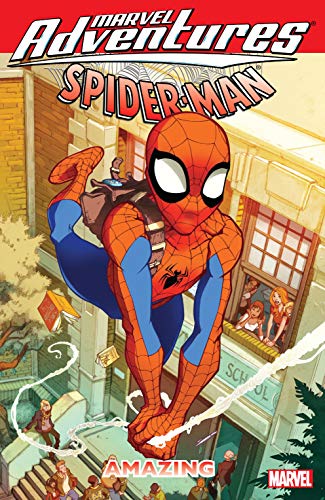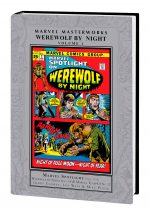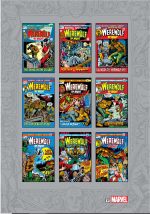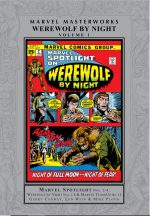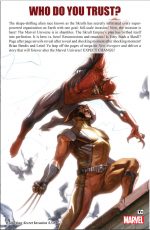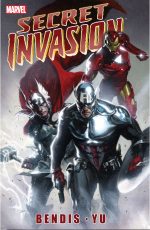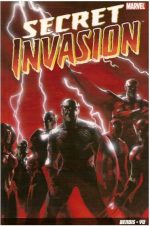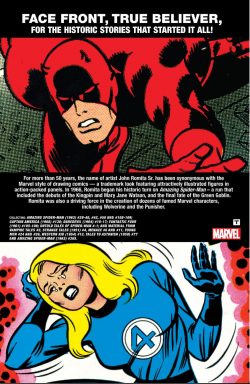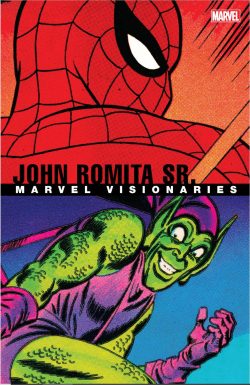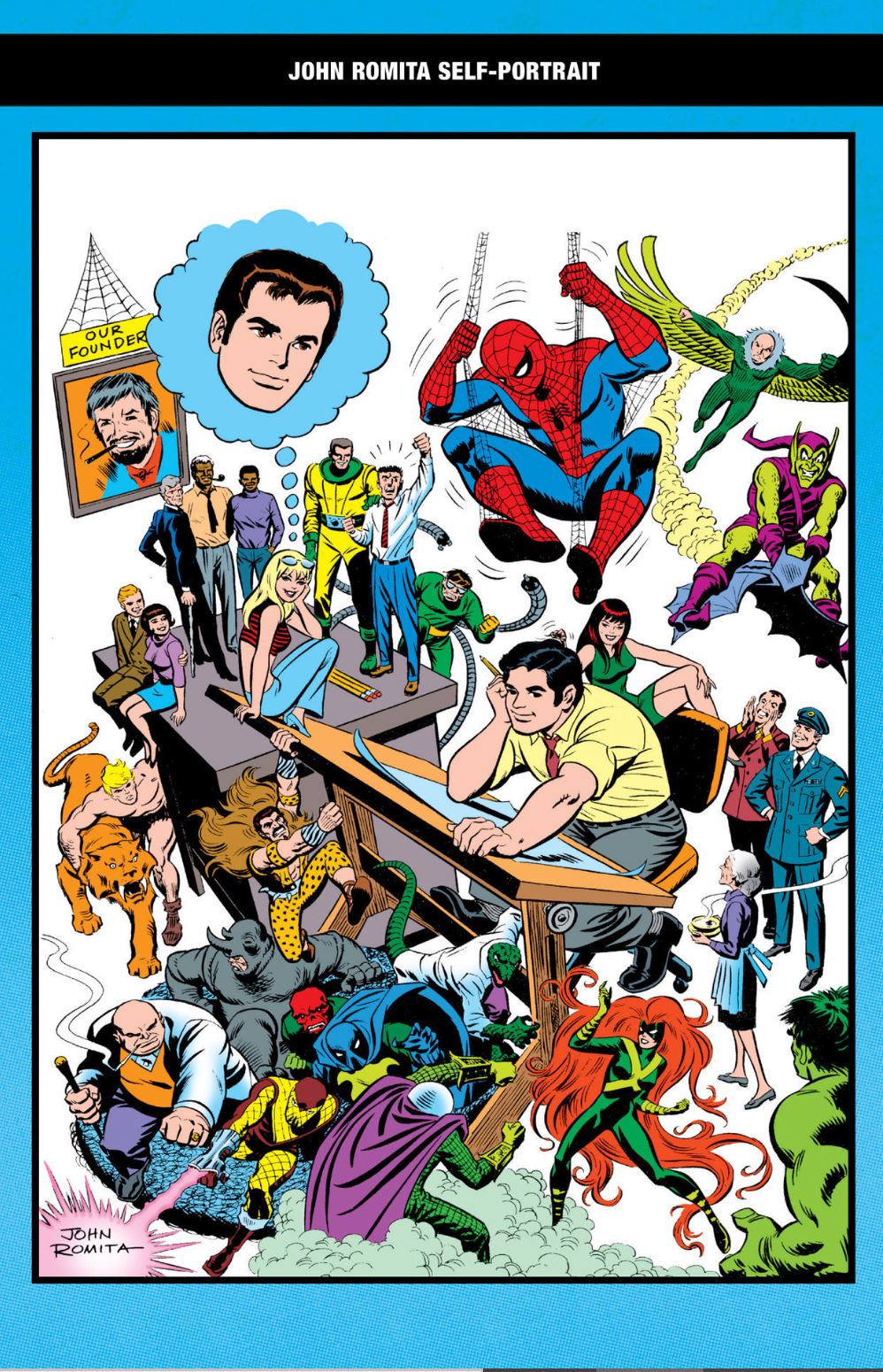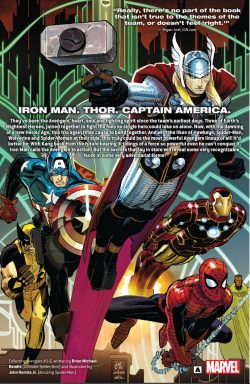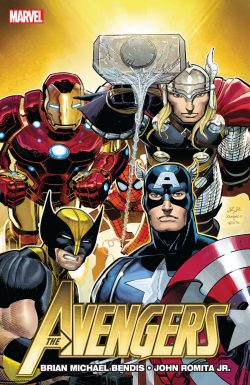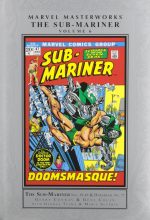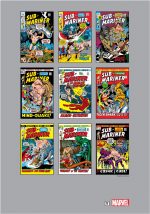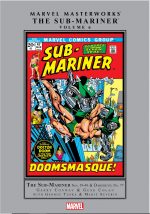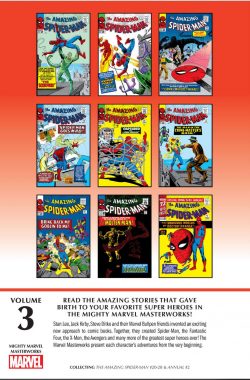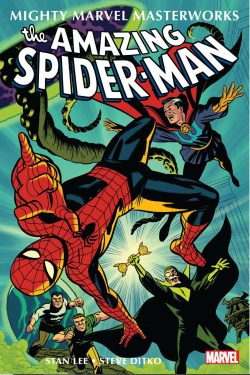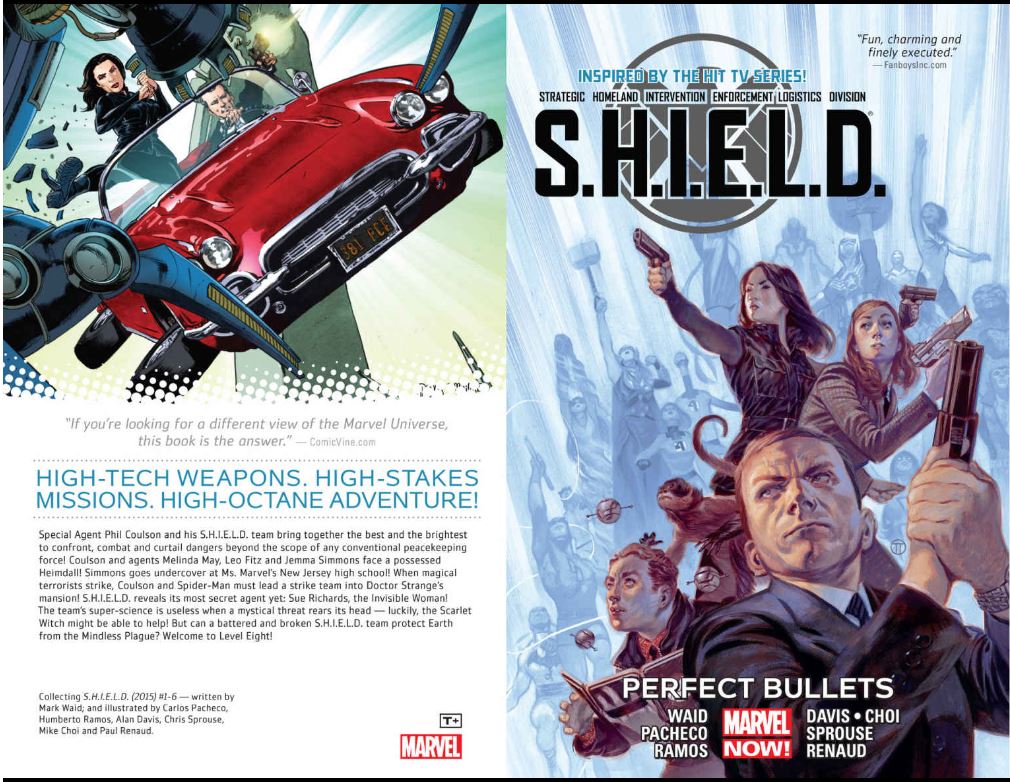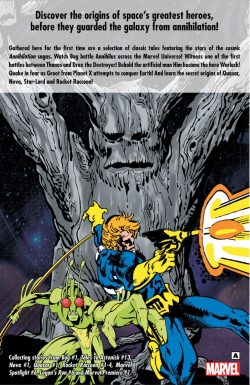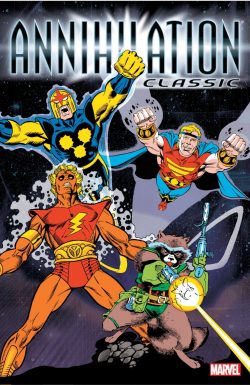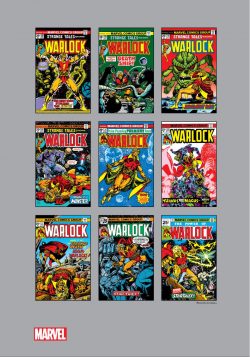
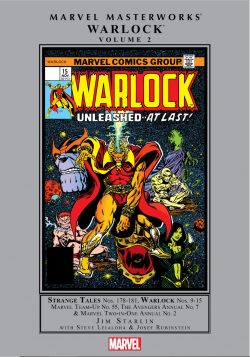
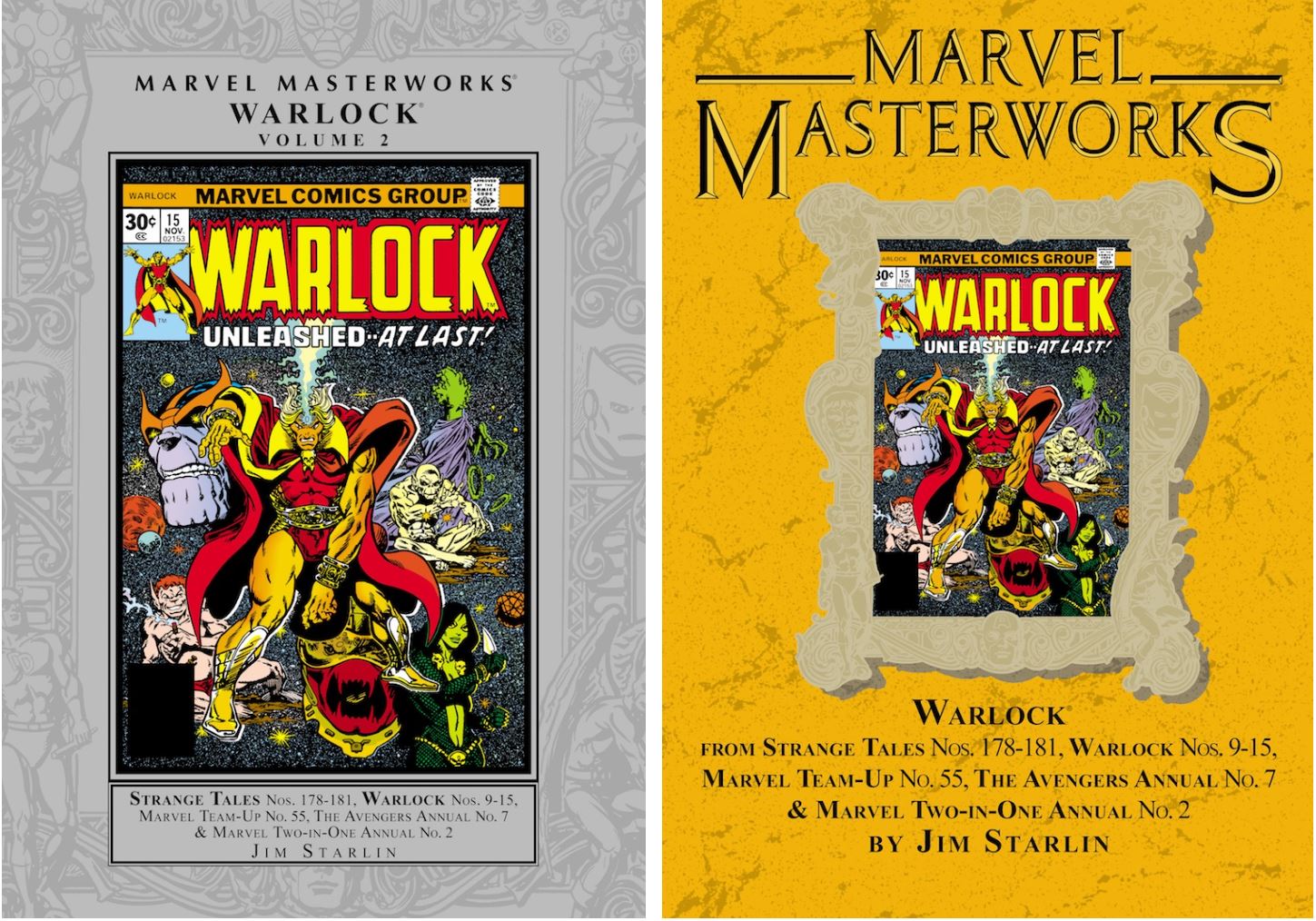
By Jim Starlin, with Bill Mantlo, John Byrne, Steve Leialoha, Josef Rubinstein, Al Milgrom, Alan Weiss, Dave Hunt & various (Marvel)
ISBN: 978-0-7851-3511-1 (HB/Digital edition)
During the early 1970s the first inklings of wider public respect for the medium of graphic narratives began to blossom in English-speaking lands. This followed avid response to pioneering stories such as Denny O’Neil & Neal Adams’ “relevancy” Green Lantern run, Stan Lee & John Buscema’s biblically allegorical Silver Surfer or Roy Thomas’ ecologically strident antihero Sub-Mariner. These all led a procession of thoughtfully-delivered attacks on drugs in many titles, and a long running undeclared campaign to support positive racial role models and include characters of colour everywhere on four-colour pages.
Part of a movement and situation mirrored in Europe and Japan, our comics were inexorably developing into a vibrant platform of diversity and forum for debate, engaging youngsters in real world issues germane and relevant to them.
In 1972, Thomas had taken the next logical step: transubstantiating an old Lee & Kirby Fantastic Four throwaway foe into a potent political and religious metaphor for the Questioning Generation…
Debuting in FF #66 (September 1967) mystery menace Him was re-imagined by Thomas & Gil Kane as a modern interpretation of the Christ myth: stationed on an alternate Earth far more like our own than that of Marvel’s fantastic universe.
Re-presenting Strange Tales #178-181, Warlock #9-15, Marvel Team-Up #55, Avengers Annual #7 and Marvel Two-in-One Annual #2 – collectively spanning cover-dates February 1975 to the end of 1977, this epic astral adventure also offers a context-soaked Introduction from comics historian/documentarian Jon B. Cook.
For latecomers and those informed only by movies…
It all began with The Power of… Warlock as the artificial man’s origin story – a lab experiment concocted by rogue geneticists – was goosed up after meeting man-made and self-created god The High Evolutionary. He was wrapped up in a bold new experiment to replicate planet Earth on the opposite side of the sun. He replayed – on fast-forward – the development of life, intent on creating humanity without the taint of cruelty and greed and deprived of the lust to kill…
It might well have worked, but when the Evolutionary wearied, his greatest mistake cruelly intervened. Man-Beast was a hyper-evolved wolf with mighty powers, ferocious savagery and ruthless wickedness. He despoiled humanity’s rise, and ensuring the Counter-Earth’s development exactly mirrored its template – with the critical exception of the superheroic ideal. This beleaguered world suffered all mankind’s woes but had no extraordinary beings to save or inspire them.
A helpless witness to desecration, Him crashed free of his life-supporting cocoon to save the Evolutionary and rout Man-Beast and his bestial cronies -a legion of similarly evolved rogue animal-humanoids dubbed “New-Men”). When the despondent, furious science god recovered, he wanted to erase his failed experiment but was stopped by his rescuer.
As a powerless observer, Him had seen the potential and value of embattled humanity. For all their flaws, he believed he could save them from the many imminent dooms caused by their own unthinking actions – pollution, over-population, wars and intolerance. His pleas convinced the Evolutionary to give this mankind one last chance…
The wanderer was hurled down to Counter-Earth, equipped with a strange gem to focus his powers, a mission to find the best in the fallen and a name of his own – Adam Warlock…
He battled long and hard and even gathered a band of faithful followers, but was constantly defeated and frustrated by human intransigence and Man-Beast’s forces, who had infiltrated and corrupted all aspects of society – especially America’s political hierarchy and the Military/Industrial complex.
After 8 issues of his struggle and a couple of interventions by Earth’s Incredible Hulk, the saga apparently ended when messianic Adam Warlock died and was reborn, thwarting Satan-analogue Man-Beast with the aid of the Jade Juggernaut: delivering a karmic coup de grace before ascending from Counter-Earth to the beckoning stars…
When the feature returned at the end of 1974 the tone, just like the times, had hugely changed. In the wake of Vietnam and Watergate, hopeful positivity and comfortable naivety had turned to world-weary cynicism and the character was draped in precepts of inescapable doom in the manner of doomed warrior Elric. It was a harbinger of things to come…
The story continues in Strange Tales #178 as ultra-imaginative morbid maverick Jim Starlin (Captain Marvel, Master of Kung Fu, Infinity Gauntlet, Dreadstar, Batman, Kid Kosmos) turns the astral wanderer into a Michael Moorcock-inspired death-obsessed, constantly outraged but exceedingly reluctant and cynical cosmic champion.
The slow spiral to oblivion begins in February cover-dated Strange Tales #178, where Starlin introduces alien Greek Chorus Sphinxor of Pegasus to recap the past by asking and answering ‘Who is Adam Warlock?’
Handling everything but lettering – that’s left to Annette Kawecki – Starlin has solitary wanderer Warlock brooding on a desolate asteroid in the Hercules star cluster just as a trio of brutes attack a frightened girl. Despite his best efforts they execute her, proud of their status as Grand Inquisitors of the Universal Church of Truth and ecstatic to remove one more heathen unbeliever…
Appalled to have failed another innocent, Warlock employs the Soul Gem at his brow to briefly resurrect her and learns of an all-conquering ruthless militant religion intent on converting or eradicating all life. His search triggers a chilling confrontation as ‘Enter The Magus!’ sees the living god of the UCT attack him and crushingly reveal an awful truth: the being who has subjugated countless worlds, exterminated trillions and fostered every dark desire of sentient beings is his own future self.
Adam Warlock than swears that he will battle this impossible situation and do whatever is necessary to prevent himself becoming his worst nightmare…
With Tom Orzechowski on words and Glynis Oliver-Wein doing colours, Starlin’s pilgrimage continues as Warlock attacks an UCT war vessel transporting rebels, “degenerates” and “unproductives” from many converted worlds. The church only deems basic humanoids as sacred and saveable, with most other shapes useful only as fodder or fuel. They make an exception for the universally deplored, vulgar and proudly reprobate race called “Trolls”. In the dungeon-brig of the ship Great Divide, Adam finds his gloomy mood irresistibly lifted by disgusting lout Pip: a troll revelling in his “independent manner and cavalier ways” and not frightened by the imminent death awaiting them all.
Meanwhile, mighty, enhanced true believer Captain Autolycus has received a message from the Temporal Leader of the Faithful. The Matriarch has decided to ignore The Magus’ instruction to capture Warlock and keep him unharmed.
As Adam instructs his fellow prisoners in the nature of rule, Autolycus acts on her command, losing his entire crew and perishing when Warlock breaks loose. After escaping the ‘Death Ship!’, Adam realises Pip has stowed away, keen to share a new adventure, but lets it go. He has a bigger problem: in the climactic final battle, the Soul Gem refused his commands, acting on its own to consume Autolycus’ memories and persona, locking them inside the twisted champion’s head…
In ST #180’s ‘Judgment!’ (with additional inking by Alan Weiss), Pip and Warlock have submerged themselves in the heaving masses of Homeworld whilst hunting the living god they oppose. Terrified of the uncontrollable spiritual vampire on his brow, Adam tries to remove it and discovers it has already stolen him: without it he will perish in seconds…
Pushed into precipitate action and living on borrowed time, Warlock invades the Sacred Palace and is offered a curious deal by the Matriarch and is captured when he refuses. Subjected to ‘The Trial of Adam Warlock’, the appalled adventurer endures a twisted view of the universe courtesy of Grand Inquisitor Kray-Tor, even as in the city, Pip thinks he scored with a hot chick. In truth, he’s been targeted by public enemy number one. Gamora is called “the deadliest woman in the whole galaxy” and has plans for Adam, which include him being alive and free…
Back in court, the golden man has rejected Kray-Tor’s verdict and, disgusted and revolted by the proceedings, foolishly lets his Soul Gem feed. The carnage he triggers and subsequent guilt leaves him catatonic and in the hands of the Matriarch’s cerebral reprogrammers…
Starlin was always an outspoken and driven creator with opinions he struggled to suppress. His problems with Marvel’s working practises underpin ST #181’s ‘1000 Clowns!’ as old pal Al Milgrom inks a fantastic recap and psychological road trip inside the hero’s mind. None of the subtext is germane if you’re just looking for a great story however, and – in-world – Warlock’s resistance to mind-control is mirrored by Pip and Gamora’s advance through the UCT citadel to his side.
Embattled by the psychic propaganda assaulting him, Warlock retreats into the safety of madness, and learns to his horror that this has been what The Magus wanted all along. Now the dark messiah’s victory and genesis are assured…
The triumph was celebrated by the resurrection of the hero’s own title and – cover-dated October 1975 – Warlock #9 revealed the master plan of Adam’s future self. Inked by Steve Leialoha ‘The Infinity Effect!’ saw the mirror images in stark confrontation with evil ascendent, unaware that Gamora was an agent of a hidden third party and that all the chaos and calamity was part of a war of cosmically conceptual forces.
The saga heads into the Endgame as the Magus explains in cruel detail how he came to power and that Adam’s coming days are merely his past, before summoning abstract terror The In-Betweener to usher in their inevitable transformation. There is one problem however: the first time around Adam/Magus was never attacked and almost thwarted by an invisible green warrior woman.
Crushed by the realisation that he will become a mass-murdering spiritual vampire, Warlock reels as the hidden third element arrives to save everything…
‘How Strange My Destiny!’ (#10, inked by Leialoha) finds Pip, Gamora, Adam and mad Titan Thanos battling 25,000 cyborg Black Knights of the Church rapturously paying ‘The Price!’ of devotion in a stalling tactic until the In-Betweener arrives…
Kree Captain Mar-Vell narrates a handy catch-up chapter detailing ‘Who is Thanos?’ as the beleaguered champions escape, before ‘Enter the Redemption Principle!’ explores some of the Titan’s scheme and why he opposes the Magus and his Church, even as the victorious dark deity realises that Thanos’ time probe is the only thing that can upset his existence…
How Strange My Destiny – with finished art by Leialoha from Starlin’s layouts – continues and concludes in #11 as ‘Escape into the Inner Prison!’ sees the Magus and his Black Knight death squads brutally board Thanos’ space ark. A combination of raw power and the Soul Gem buy enough time for Warlock and the troll to use the time probe, which dumps them in the future, just as In-Betweener arrives to convert the hero and supervise ‘The Strange Death of Adam Warlock!’, resulting in a reshuffling of chronal reality and Thanos’ triumph…
After months of encroaching and overlapping Armageddons, Warlock #12 diverts and digresses in ‘A Trollish Tale!’ as Pip’s addiction to hedonism and debauchery entraps him in professional harlot Heater Delight’s plan to escape a life on (non)human sexual trafficking in a star-roaming pleasure cruiser. He’s happy with the promised reward for his efforts, but hadn’t considered that her pimp might object to losing his meal ticket…
Drama returns with a bang in #13 as ‘…Here Dwells the Star Thief!’ introduces a threat to the entire universe stemming from a hospital bed on Earth. New England’s Wildwood Hospital houses Barry Bauman, whose life is blighted by a total lack of connection between his brain and nerve functions. Isolated and turned inward for his entire life, Barry has discovered astounding psychic abilities, the first of which was to possess his nurse and navigate an unsuspected outer world. His intellect also roams the endless universe and brooding, doomed Warlock is there when Barry consumes an entire star just for fun…
Outraged at the wilful destruction, Warlock uses his own powers to trace the psionic force and resolves to follow it back to the planet of his original conception and construction even as ‘The Bizarre Brain of Barry Bauman’ explores the Star Thief’s origins and motivations before formally challenging Adam to a game of “stop me if you can”…
Spitefully erasing stars and terrorising the Earth as Warlock traverses galaxies at top speed, Bauman knows a secret about his foe that makes his victory assured, but still lays traps in his interstellar path. The ‘Homecoming!’ is accelerated by a shortcut through a black hole but when Adam arrives at the Sol system, he receives a staggering shock: his journeys and simple physics have wrought physical changes making it impossible to ever go home again…
Sadly for Barry, his gleeful frustration of his foe distracts him just when he should be paying close attention to his physical body…
As the series abruptly ended again (November 1976), Starlin returned to full art & story chores in #15’s ‘Just a Series of Events!’ Exiled from Earth, Adam rants as elsewhere, Thanos moves on his long-term plans. Without the threat of The Magus, his desire for total stellar genocide can proceed, but he worries that his adopted daughter Gamora might be a problem. He should be more concerned about his own nemesis-by-design Drax the Destroyer…
The saga then pauses with Adam, confronting a host of plebian injustices and seemingly gaining dominance over his Soul Gem…
Vanished again, Adam Warlock only languished in limbo for a few months. In mid-December 1976, Marvel Team-Up #55 (cover-dated March 1977) addressed his altered state as Bill Mantlo, John Byrne & Dave Hunt crafted ‘Spider, Spider on the Moon!’
For reason too complicated to explain here, Spider-Man had been trapped in a rocket and blasted into space and was happily intercepted and left in the oxygenated-and heated Blue Area. Warlock then assisted the Arachnid and mysterious alien The Gardener against overbearing ephemera collector The Stranger. He sought possession of the Golden Gladiator’s life-sustaining Soul Gem, but soon discovered an equally fascinating alternate choice…
Despite his sporadic and frankly messy publishing career, Warlock has been at the heart of many of Marvel’s most epochal and well-regarded cosmic comic classics, and ending this compendium is probably the very best: an extended epic spanning two summer annuals and seemingly signalling the end on an era…
‘The Final Threat’ (by Starlin & Joe Rubinstein) comes from Avengers Annual #7, which sees Protector of the Universe Mar-Vell AKA Captain Marvel and Titanian ultra-mentat Moondragon return to Earth with vague anticipations of impending catastrophe. Their premonitions are confirmed when galactic wanderer Adam Warlock arrives with news that death-obsessed Thanos has amassed an alien armada and built a soul gem-fuelled weapon to snuff out stars like candles…
Spanning interstellar space to stop the scheme, the united heroes forestall alien invasion and prevent the Dark Titan from destroying the Sun, but only at the cost of Warlock’s life…
Then ‘Death Watch!’ (Starlin & Rubinstein, Marvel Two-in-One Annual #2) finds Peter Parker plagued by prophetic nightmares. These disclose how Thanos had snatched victory from defeat and now holds the Avengers captive whilst again preparing to extinguish Sol.
With nowhere else to turn, the anguished, disbelieving webspinner heads for the Baxter Building, hoping to borrow a spacecraft, and unaware that The Thing also has a history with the terrifying Titan.
Although utterly overmatched, the mismatched Champions of Life subsequently upset Thanos’ plans for long enough to free the Avengers before the Universe’s true agent of retribution ends the Titan’s threat forever… at least until next time…
The sidereal saga seemingly done, this collection also offers bonus treats in the form of 16 pages of unused pencils by Alan Weiss. The photostats come from an issue lost in transit, and are supplemented by before-&-after panels judged unsuitable by the Comics Code Authority, the various production stages of Starlin & Weiss’ cover art for Warlock #9, with sketches, designs, frontispieces and full pages of original art.
Also on view are Starlin’s wraparound covers from 1983 reprint series Warlock Special Edition #1-6 and 1992-1993’s Warlock reruns (#1-6) in support of the Infinity Gauntlet, plus pertinent house ads and full biographies.
Ambitious, unconventional and beautiful to behold, Warlock’s adventures are very much a product of their tempestuous, socially divisive times. For many, they proved how mature comics might become, but for others they were simply pretty pictures and epic fights with little lasting relevance. What they unquestionably remain is a series of crucial stepping stones to greater epics: unmissable appetisers to Marvel Magic at its finest.
© 2017 Marvel Characters, Inc. All rights reserved.
